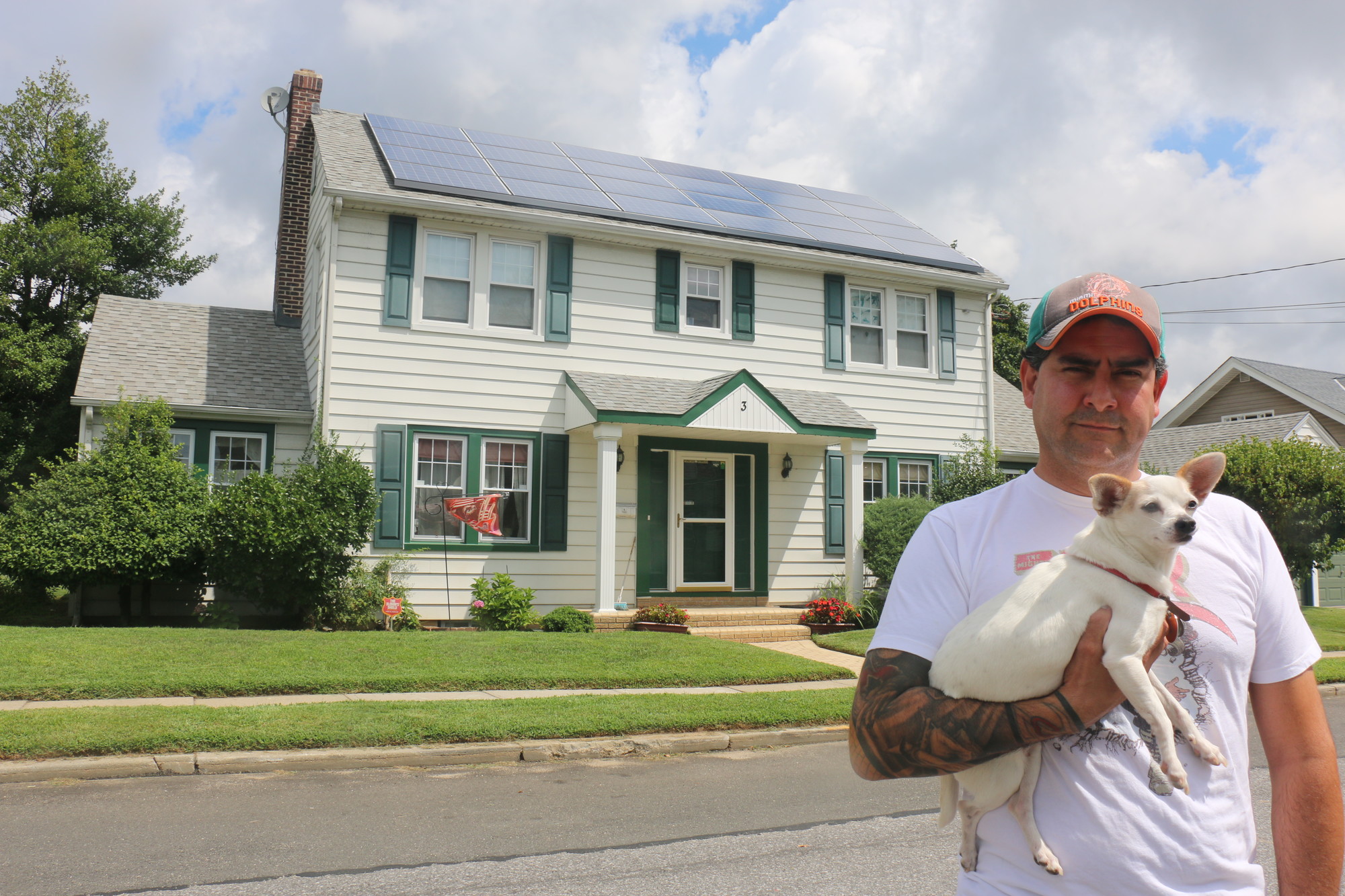Homeowner sings solar’s praises
Solar panels cut electricity bill in half
People stop to ask Gus Rendon about his East Carpenter Street home’s solar panels so often that he keeps his sales representative’s business cards in his pocket when he does yard work.
“Their question is pretty basic,” he said. “Am I saving?”
He is, he tells them, a little more than $100 per month. Rendon said he made the change after two large trees that were in front of his house were damaged during Hurricane Sandy in 2012. The insides were rotted, so the village removed what was left of the stumps, and Rendon was left with a sun-bathed property.
“Maybe a day after that, I heard these commercials,” he said. “No-money-down leasing on solar panels, which I never heard of before. I knew solar existed, but you had to buy it. Now was the first time I heard of leasing.”
Rendon said he called eight companies, some of which wanted to go as far as to put a new roof on his house — before they even looked at the roof.
“Those guys didn’t even make it to the curb,” he said.
He narrowed his options down to two, and went with a company called SolarCity, which offered lower monthly lease payments. The sales representative from the other company soon left to work for SolarCity, and became his representative, he said. SolarCity had the backing of some big-name companies like Google and Tesla Motors, which put Rendon at ease.
The panels were installed at no cost, with the company paying for the required permits from the village. Once they were operational, Rendon got his first bill: $95 — down from $200 he paid for his last month of electricity from PSE&G. Except for a monthly connection fee of $10.12 to PSE&G, he doesn’t expect to pay anything for electricity for about four years due to a federal government tax write-off of $5,000. With his PSE&G usage meter running backward and his excess power going to his neighbors, Rendon gets enough credit from the company to cover the connection fee each month. It all results in no money coming out of his pocket for electricity until his tax write-off runs out, at which point he will be paying about half what he used to.
When passing dog walkers or drivers stop and ask him about his experience, Rendon said he wants to communicate that moving to solar is more practical than some might think.
“Not that I’m worried about a carbon footprint, but it just makes sense now,” said Rendon, who lives with his wife, 12-year-old son and 20-year-old daughter. “My main priority is saving money to take care of my family now.”
Rendon’s home is one of 55 in the village that has a permit for solar panels, according to Building Superintendent Tom McAleer. Three commercial properties have permits, and countiing the village’s band shell at the Village Green a total of 59 structures that the sun to power utilities. The panels on the band shell, installed a year ago, supply about a quarter of Village Hall’s energy. McAleer said that panels are also being considered for the roof of the new courthouse at 195 Rockaway Avenue, and for the Department of Public Works facility.
Rendon’s conversion also meant that he swapped his gas powered lawn tools for ones he could charge. He doesn’t plan on moving, but if he does, he expects the panels would add value to his home. If necessary, the company would remove them at no cost.
The outcome has been beneficial enough that Rendon said he would like to see the option promoted to the wider community, through something like an informational fair hosted by the village and local real estate businesses.
“I’m thinking about my neighbors,” he said, adding that seniors and others who live on fixed incomes might find the lower cost especially helpful.
While “going green” wasn’t much of a motivating factor for him, Rendon said, it wasn’t a bad thing.
“It does make a difference to me,” he said. “Everybody’s here for whatever time you’re here for, and if you can help, you help. If it’s that easy to do it — and it is — you should do it.”

 47.0°,
Mostly Cloudy
47.0°,
Mostly Cloudy 




